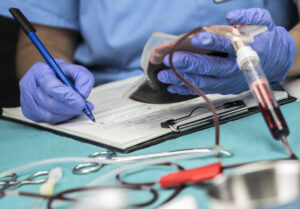Antibody levels are important for many aspects of clinical care from evaluating the incompatibility of transfusions and transplants to determining certain diagnoses such as hemolytic reactions. Although no gold standard exists to determine antibody levels, the majority of assays depend on titration and grading the strength of agglutination, which has been performed manually and is operator dependent. The uniform procedure uses a weak positive titration endpoint to reduce variability, but substantial variation still exists between assays and laboratories. In order to better understand the testing accuracy and variation between and within laboratories, the College of American Pathologists (CAP) analyzed antibody titer proficiency data (10,852 responses for anti-D and 5,680 responses for anti-A, collected twice per year) from 2014 to 2018 from 1337 U.S. and international laboratories. Overall, only 54.1% (5874/10,852) of anti-D tests and 63.4% (3603/5680) of anti-A tests were accurate within one titer. When two samples with the same titer were titrated in the same laboratory, 85% of laboratories using the uniform procedure and 80% using other methods reported a titer difference of one or less. Given the strong reliance on antibody titer results for clinical diagnostics, further standardization of antibody titers is needed.
Reference:

